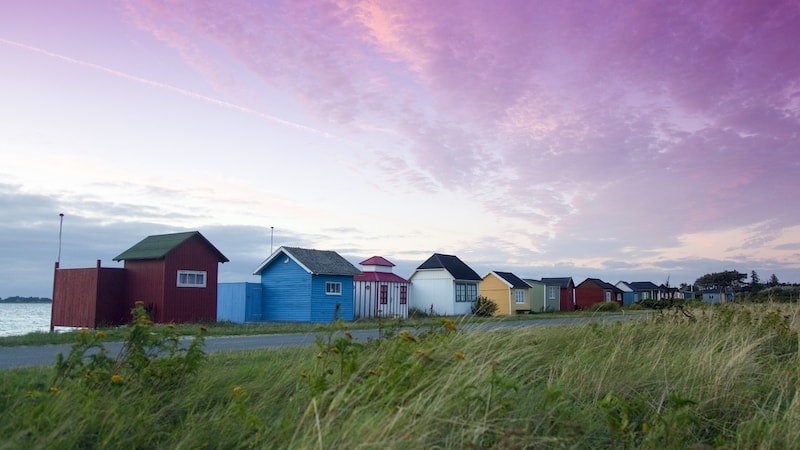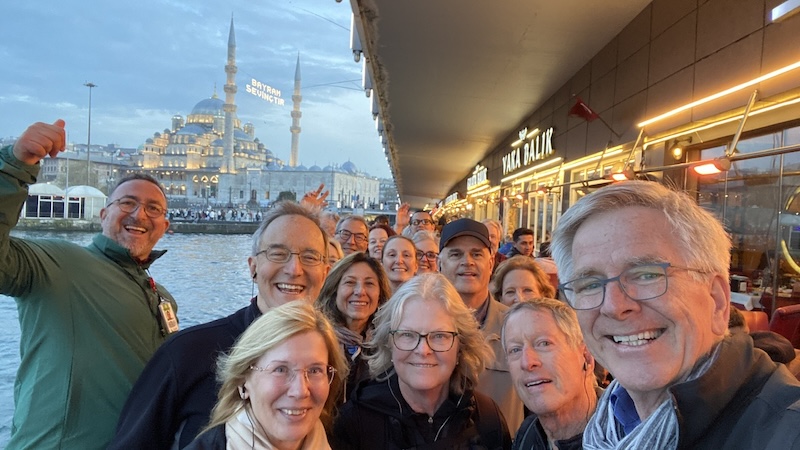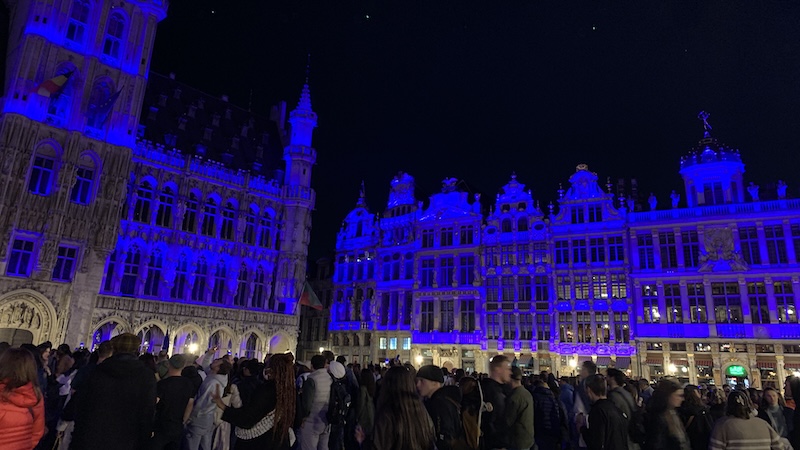The Charming Danish Isle of Ærø
A ‘hyggelig’ bike ride past history through a thoughtful today

Ride along with Rick Steves through the charming Danish Isle of Ærø, past hidden villages, U-shaped farms, windmills, a solar power plant, churches, beaches, prehistoric burial grounds, and more.
Biking the back lanes of the island of Ærø, I come to a lonely little church. Wandering through its graveyard, I notice the name on every tombstone ended in “sen.” The inscriptions, such as “Here lies Christian Hansen at anchor with his wife. He’ll not weigh until he stands before God” seem to fit the salty charm of this tiny island on the southern edge of Denmark.
Ærø is the kind of island where baskets of strawberries sit in front of farmhouses — for sale on the honor system. And most people here don’t bother locking up their bikes.
Ærø statistics: It’s 22 by 6 miles, with 7,000 residents, 350 deer, seven pastors, no crosswalks, three police officers, and a pervasive passion for the environment. Pedaling against a steady breeze, I pass sleek modern windmills hard at work. Along with windmills, Ærø has one of the world’s largest solar power plants. Well on its way to being completely wind- and solar-powered, this little Danish isle was recently recognized by the European Union as the greenest in Europe.
My 18-mile trip laces together the best of Ærø’s charms. Leaving my home base, the ship-in-a-bottle town of Ærøskøbing, I see the first of many U-shaped farms, so typical of Denmark. The three sides block the wind and store cows, hay, and people. I bike along a dike built in the 19th century to make swampland farmable. While the weak soil is good for hay and little else, they get the most out of it. Each winter locals flood their land to let the saltwater nourish the soil and grass, in the belief that this causes their cows to produce fatter milk and meat. Struggling uphill I reach the island’s 2,700-inch-high summit — a “peak” called Synneshøj (“Seems High” … and after this pedal, it does).
An easy-living lifestyle is very Danish
Each town has a fine 12th-century church. At the church in Bregninge, the interior is still painted in the gothic style. A long stick with an offering bag comes equipped with a ting-a-ling bell to wake those nodding off. Little ships hanging in the nave are perhaps memorials to lost sailors. The Danish word for nave is the same as its word for ship. A portrait of Martin Luther hangs in the stern, keeping his Protestant hand on the rudder. The long list adjacent allows pastors to trace their pastoral lineage back to Doctor Luther himself.
Rolling away, I notice how Bregninge is in a gully. Imagine pirates, centuries ago, trolling along the coast looking for church spires marking unfortified villages. Ærø’s 16 villages are all invisible from the sea — church spires carefully designed not to be viewable from sea level.
A lane leads downhill, dead-ending at a rugged bluff called Vodrup Klint. If I were a pagan, I’d worship here — the sea, the wind, and the chilling view. The land steps in sloppy slabs down to the sea. The giant terraces are a clear reminder that when saturated with water, the slabs of clay that make up the land here get slick, and entire chunks can slip and slide.
Another view of the charming Danish Isle of Ærø
While the wind at the top could drag a kite-flier, the beach below is ideal for sunbathing. I can’t see Germany, which is just across the water, but I do see a big stone that commemorates the return of the island to Denmark from Germany in 1750.
As they do all over Europe, churches mark pre-Christian holy sites. In a field adjacent to the next church, stands the Langdysse Tingstedet — a 6,000-year-old dolmen. This was an early Neolithic burial place. While Ærø once had more than 200 of these prehistoric tombs, only 13 survive.
The name “Tingstedet” indicates that this was a Viking assembly spot. The site evokes the scene a thousand years ago of Viking chiefs representing the island’s various communities gathering here around their ancestors’ tombs. The site is a raised mound the shape and length (30 yards) of a Viking ship. Lining the mound are stones that were considered fertility aids: For centuries, locals in need of extra virility chipped off bits and took them home.
Rick Steves looks at the easygoing Danish life
I roll back into my home base of Ærøskøbing. The sun is setting, so I pedal right on through to the sunset beach – where a row of tiny huts line the strand and where many a local enjoyed their first kiss. The huts are little more than a picnic table with walls and a roof – each lovingly painted and carved – stained with generations of family fun, sunsets, and memories of pickled herring on rye bread. It’s a perfect Danish scene where small is beautiful, sustainability is just common sense, and a favorite word, hyggelig, takes cozy to a whole new level.
PHOTO CAPTION, ABOVE: Cozy little beach houses in the town of Ærøskøbing have been lovingly tended by local families for generations. CREDIT: Rick Steves.

Explore more of Rick Steves’ Europe in Boomer
©2023 RICK STEVES
As an Amazon Associate, Boomer Magazine earns from qualifying purchases of linked books and other products.



